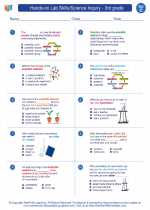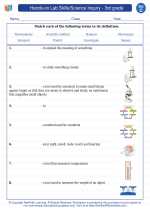Stars
Stars are massive, luminous spheres of plasma held together by gravity. They are the fundamental building blocks of the universe and are responsible for the creation of heavy elements through nuclear fusion in their cores. Stars come in various sizes, colors, and temperatures, and they play a crucial role in the formation of galaxies, solar systems, and the existence of life.
Key Points to Remember:
- Formation: Stars are formed from vast clouds of gas and dust known as nebulae. The force of gravity causes these clouds to collapse, triggering the birth of a new star.
- Nuclear Fusion: The energy produced by stars comes from nuclear fusion, where hydrogen atoms fuse to form helium, releasing a tremendous amount of energy in the process.
- Classification: Stars are classified based on their spectral characteristics, including temperature, color, and luminosity. The classification system uses letters such as O, B, A, F, G, K, and M, with O-type stars being the hottest and M-type stars being the coolest.
- Life Cycle: Stars go through a life cycle that includes stages such as protostar, main sequence, red giant, and white dwarf (for smaller stars) or supernova and neutron star/black hole (for larger stars).
- Constellations: Stars are often grouped into patterns known as constellations, which have been used for navigation and storytelling throughout human history.
- Importance: Stars provide the energy and elements necessary for the formation of planets, and their radiation can influence the habitability of those planets.
Study Guide Questions:
- What is the primary source of energy for stars?
- How are stars formed?
- Explain the classification system used for stars based on their spectral characteristics.
- Describe the life cycle of a star, including the stages it goes through.
- What are constellations, and what role have they played in human history?
- Discuss the importance of stars in the formation of planets and the potential for habitability.
Studying the nature of stars is essential for understanding the universe and our place within it. By exploring the life cycles, classifications, and roles of stars, we gain valuable insights into the origins and evolution of celestial bodies.
[Star] Related Worksheets and Study Guides:
.◂Science Worksheets and Study Guides Third Grade. Hands-on Lab Skills/Science Inquiry - 3rd grade
Study Guide Hands-on Lab Skills/Science Inquiry - 3rd grade
Hands-on Lab Skills/Science Inquiry - 3rd grade  Worksheet/Answer key
Worksheet/Answer key Hands-on Lab Skills/Science Inquiry - 3rd grade
Hands-on Lab Skills/Science Inquiry - 3rd grade  Worksheet/Answer key
Worksheet/Answer key Hands-on Lab Skills/Science Inquiry - 3rd grade
Hands-on Lab Skills/Science Inquiry - 3rd grade  Worksheet/Answer key
Worksheet/Answer key Hands-on Lab Skills/Science Inquiry - 3rd grade
Hands-on Lab Skills/Science Inquiry - 3rd grade  Worksheet/Answer key
Worksheet/Answer key O-W-L
O-W-L  Vocabulary/Answer key
Vocabulary/Answer key Hands-on Lab Skills/Science Inquiry - 3rd grade
Hands-on Lab Skills/Science Inquiry - 3rd grade  Vocabulary/Answer key
Vocabulary/Answer key Hands-on Lab Skills/Science Inquiry - 3rd grade
Hands-on Lab Skills/Science Inquiry - 3rd grade 

 Worksheet/Answer key
Worksheet/Answer key
 Worksheet/Answer key
Worksheet/Answer key
 Worksheet/Answer key
Worksheet/Answer key
 Worksheet/Answer key
Worksheet/Answer key
 Vocabulary/Answer key
Vocabulary/Answer key
 Vocabulary/Answer key
Vocabulary/Answer key

The resources above cover the following skills:
Science as Inquiry and Process: A student should understand and be able to apply the processes and applications of scientific inquiry. A student who meets the content standard should:
Develop an understanding of the processes of science used to investigate problems, design and conduct repeatable scientific investigations, and defend scientific arguments.